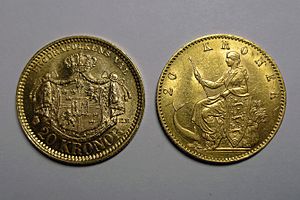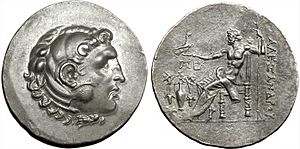Numismatics facts for kids

Numismatics is the exciting study and collecting of coins. It's also about understanding the history behind these coins. Someone who collects coins or studies their history is called a numismatist.
Contents
What Does "Numismatics" Mean?
The word "numismatics" comes from a French word, numismatique. This French word itself came from a Latin word, numismatis, which means "of coins." So, the name perfectly describes what the study is all about!
A Brief History of Coin Collecting
People have been collecting coins for a very long time. Some historians believe that even ancient leaders, like the Roman emperor Augustus, might have collected coins.
The first known book about coin collecting was written in 1514. It was called "De Asse et Partibus" by Guillaume Budé. For many centuries, coin collecting was mostly a hobby for kings and queens. It wasn't until the 1800s that more people started collecting. This is when professional groups, like the American Numismatic Society (started in 1858), began to form. These groups helped people share their passion for coins.
Different Kinds of Numismatics
Modern numismatics is a special part of this study. It focuses on coins made after machines started stamping them, which was around the 1600s. This area is very popular with collectors.
But numismatics isn't just about coins! There are other cool areas too:
- Exonumia is the study of coin-like objects. These can be tokens, medals, or even arcade game tokens.
- Notaphily is all about collecting and studying paper money. Think of all the different banknotes from around the world!
- Scripophily focuses on old stocks and bonds. These are like old paper documents that show ownership in a company or a loan.
Images for kids
-
Coin collectors and enthusiasts enjoying the taste of numismatics at an exhibition organized by the Numismatic Society of Calcutta, Kolkata, West Bengal.
-
Two 20 kr gold coins from the Scandinavian Monetary Union.
See also
 In Spanish: Numismática para niños
In Spanish: Numismática para niños





